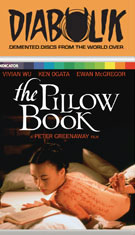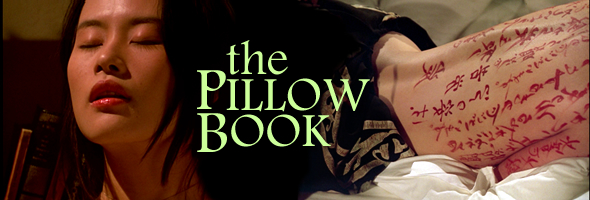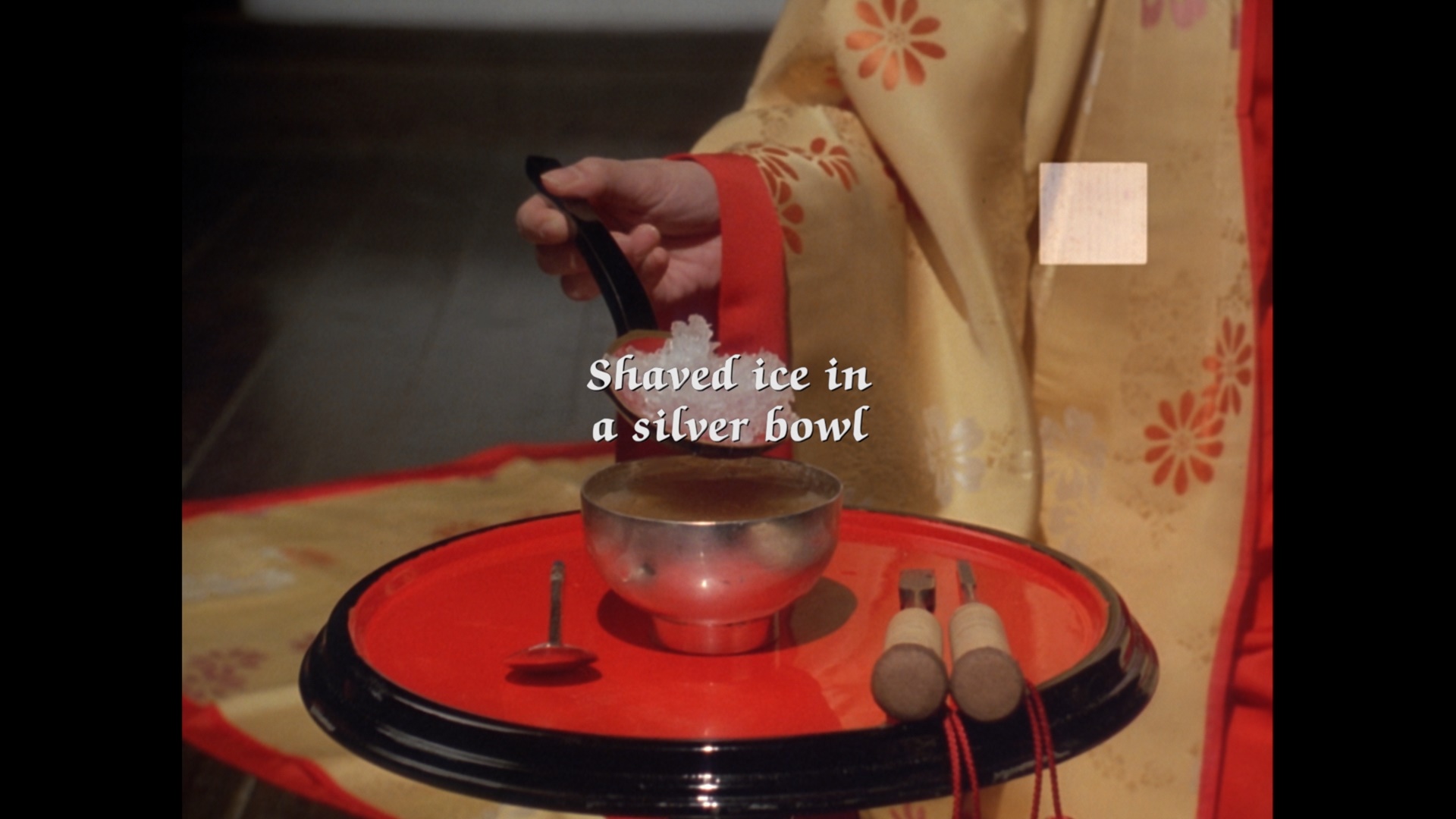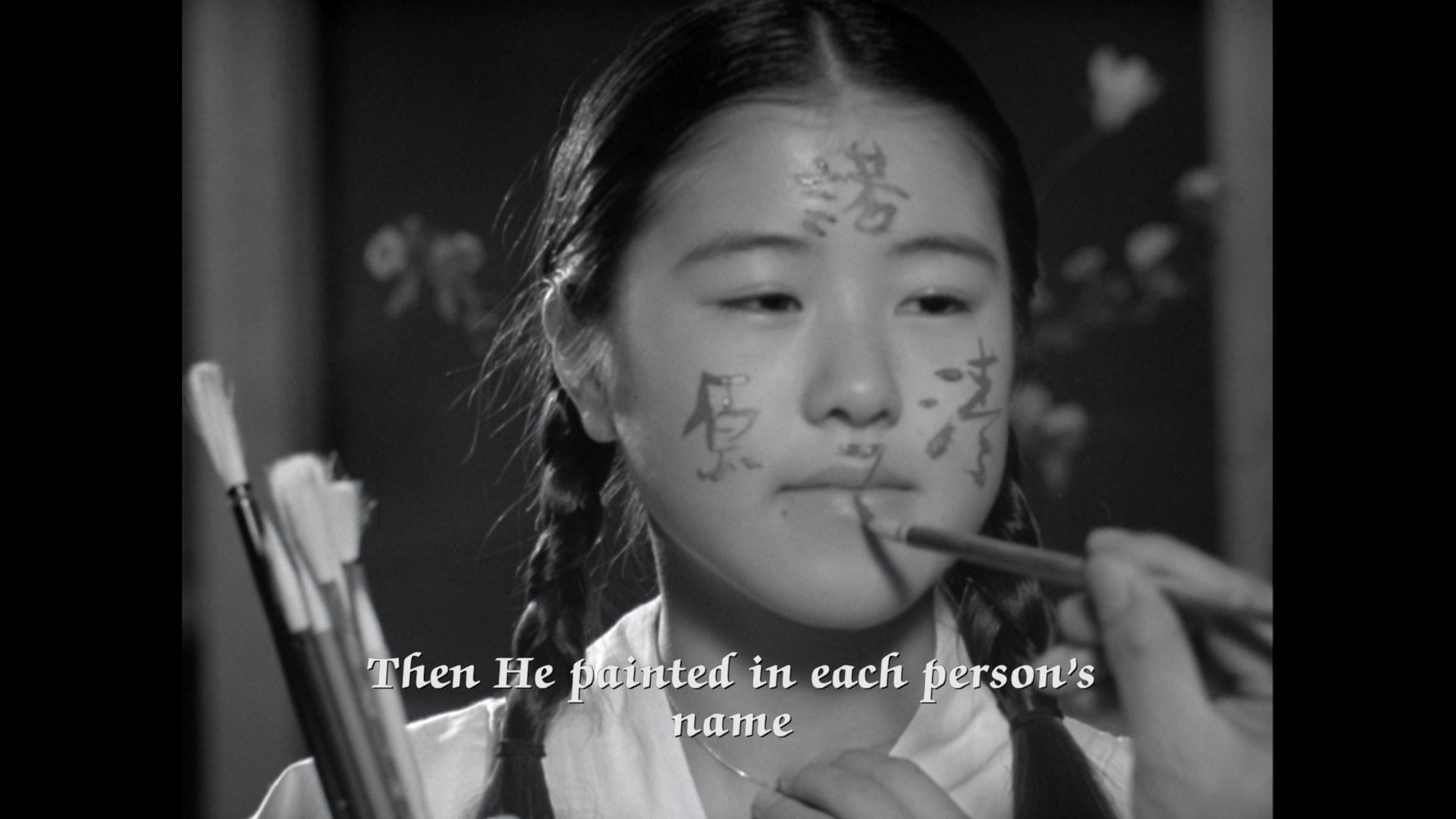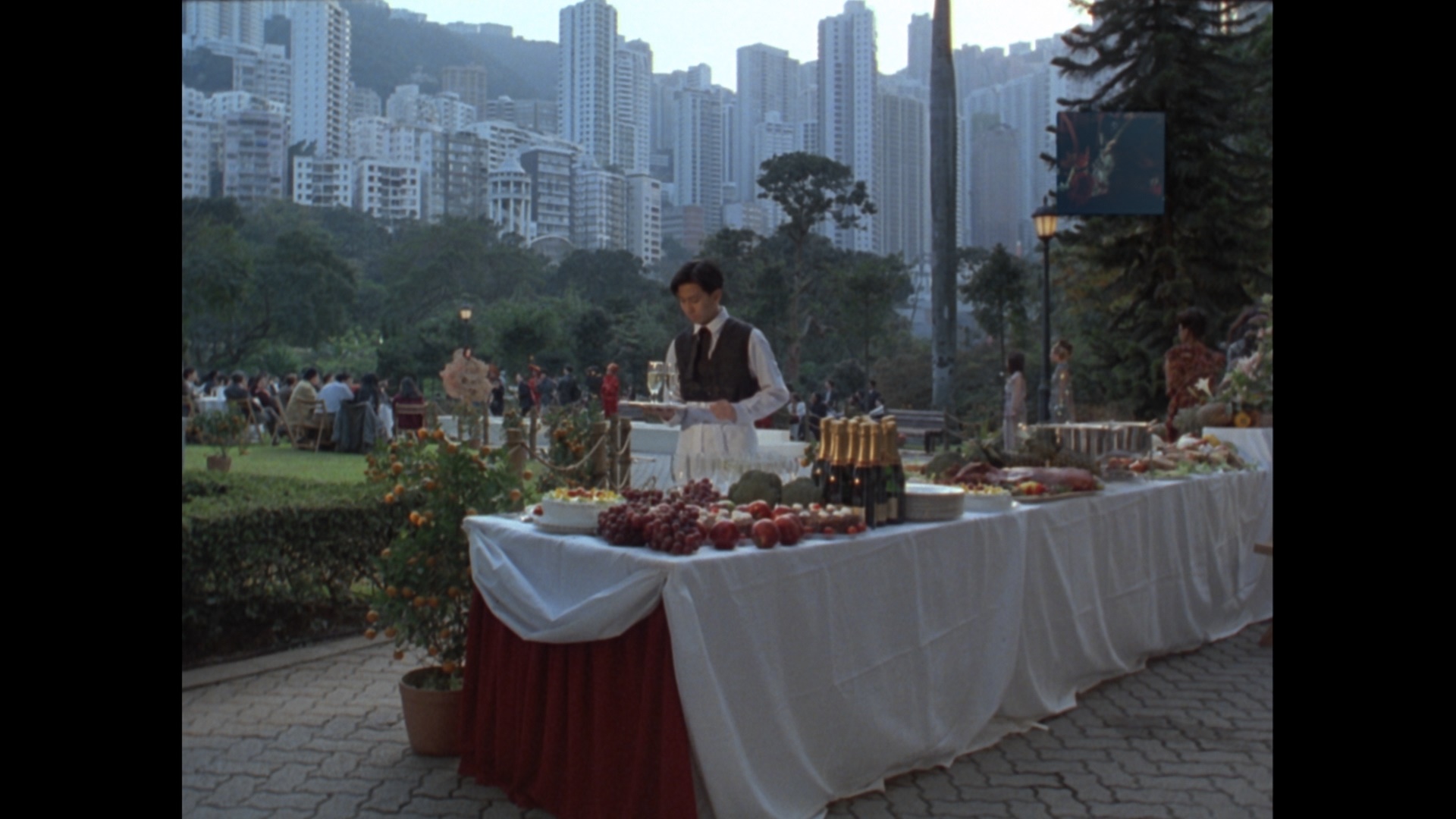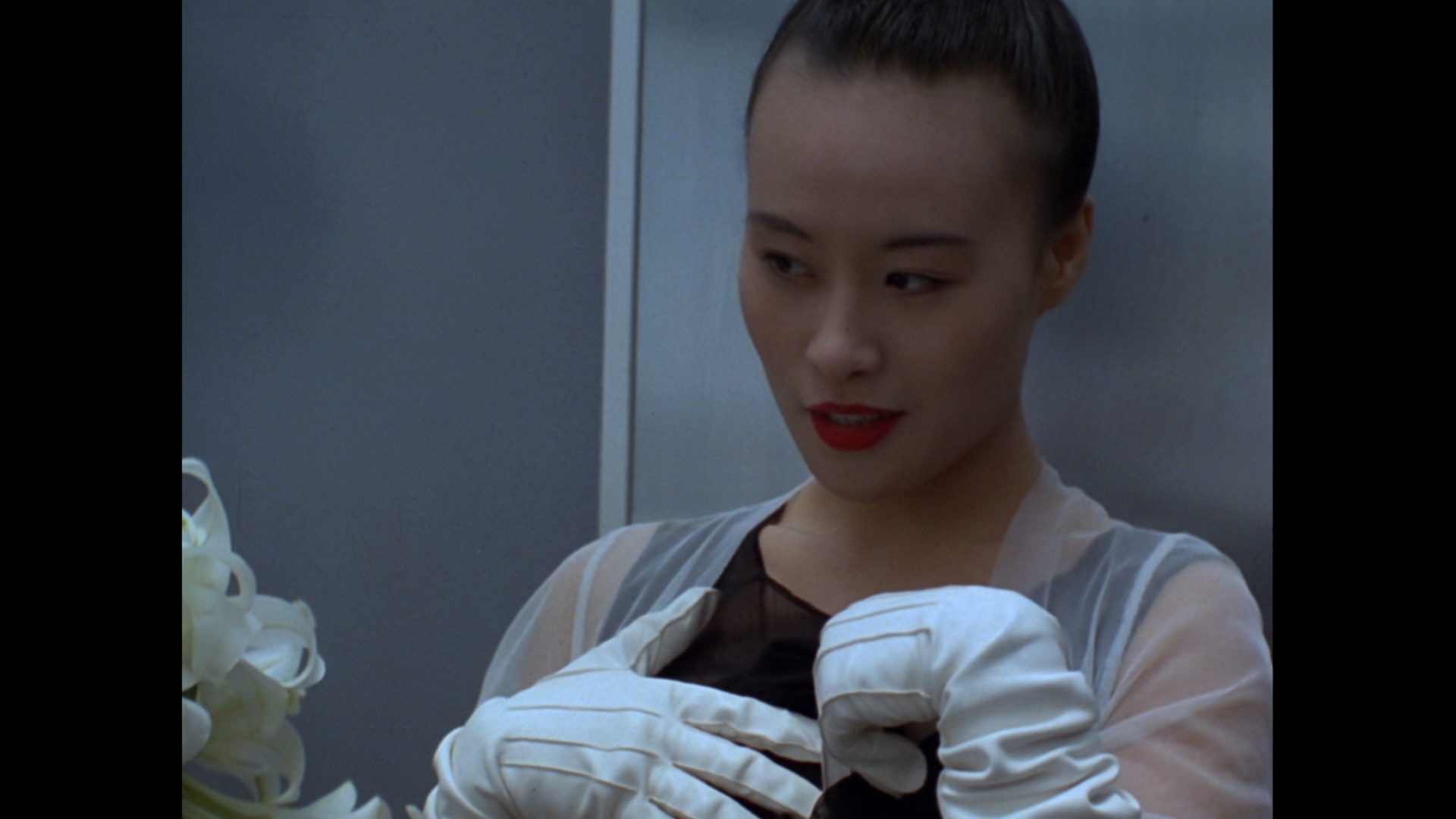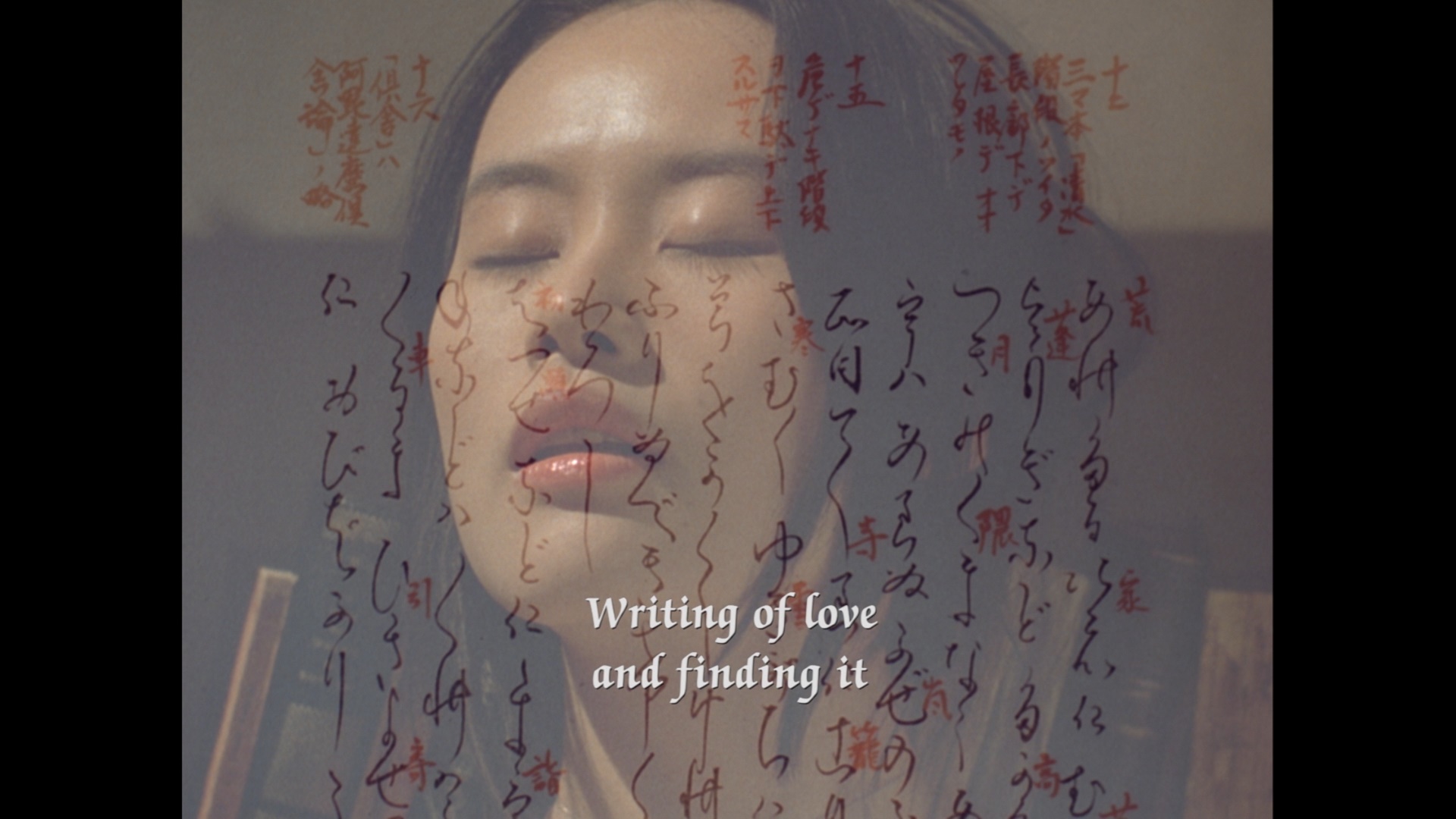Color, 1996, 126 mins. 24 secs.
Directed by Peter Greenaway
Starring Vivian Wu, Ewan McGregor, Yoshi Oida, Ken Ogata, Hideko Yoshida, Judy Ongg
Indicator (Blu-ray) (UK R0 HD), Film Movement (Blu-ray) (US RA HD), Park Circus (Blu-Ray & DVD) (UK RB/R2 HD/PAL), Sony (US R1 NTSC)
After 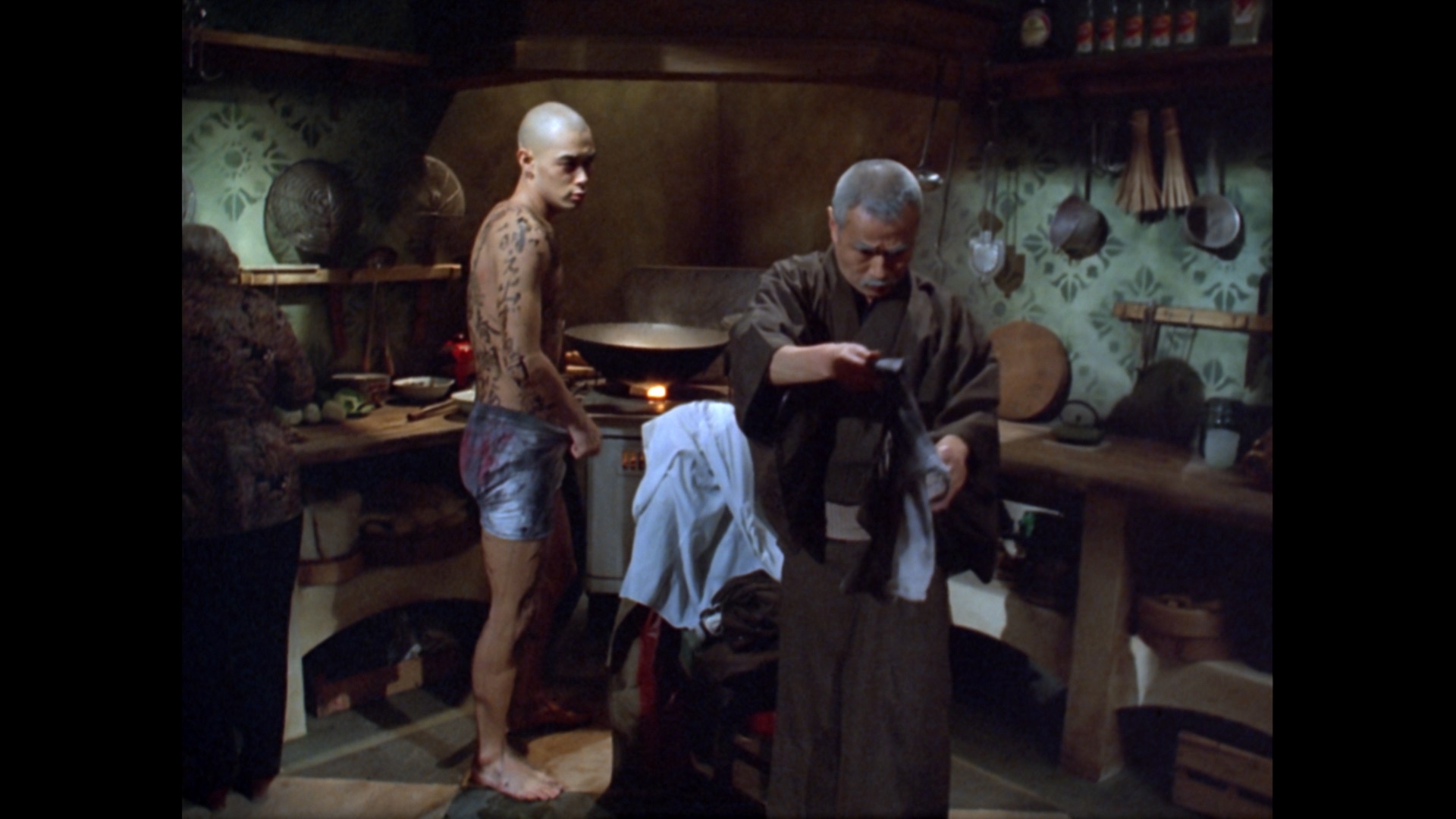 a brief tenure as an
a brief tenure as an 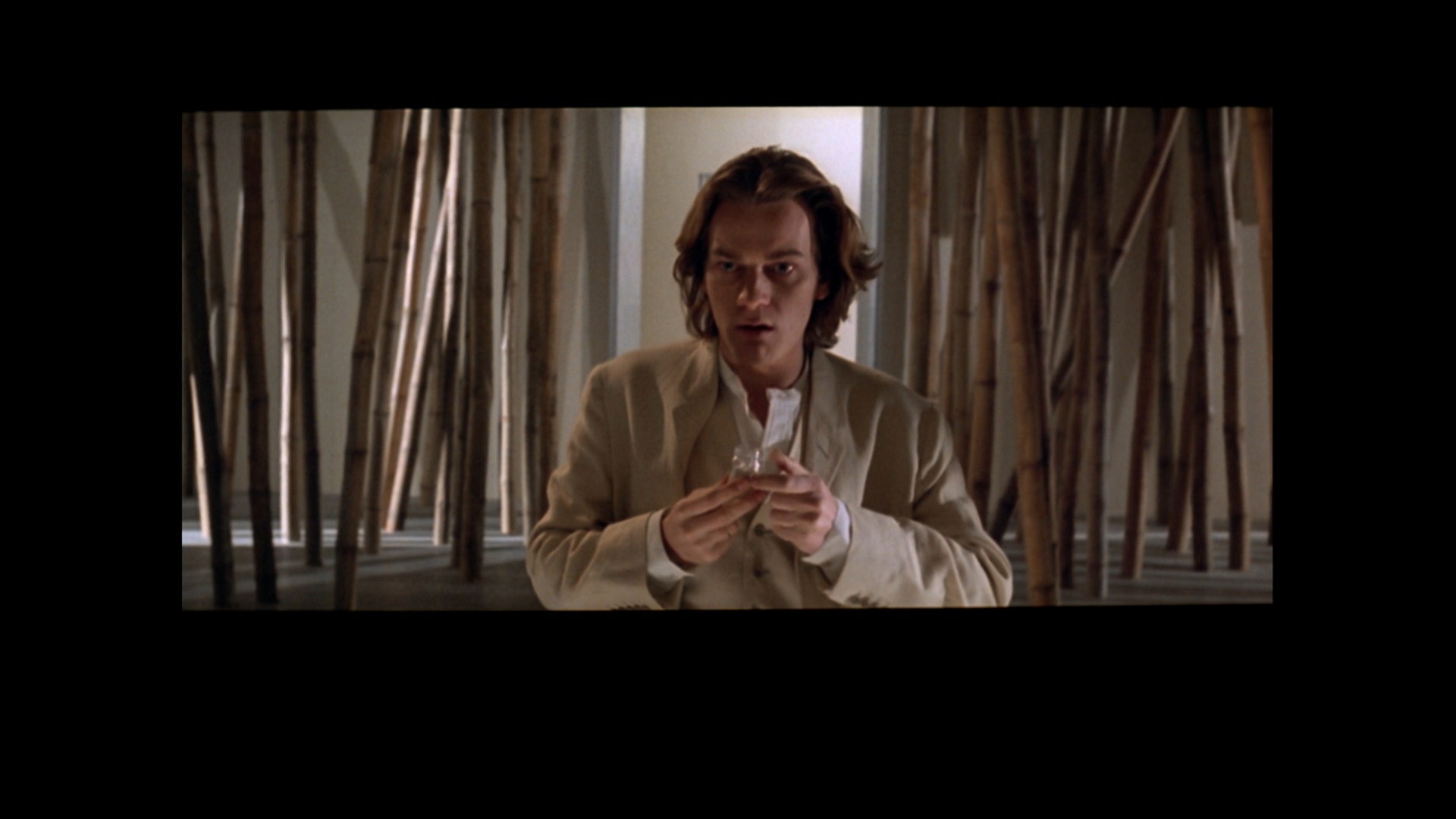 art house golden boy thanks to the sumptuous visuals feasts of The Cook, the Thief, Her Wife and Her Lover and Prospero's Books, British director Peter Greenaway began to stumble in the public and critical eye. After a falling out with composer Michael Nyman (an unfortunate end to one of the most fruitful modern cinematic relationships in European cinema), Greenaway was forced to adapt his all-song morality tale, The Baby of Macon, into a straight play within a play format that left many viewers completely baffled. Regrouping in the aftermath, Greenaway's follow up film, The Pillow Book, took almost three years to hit American shores after its completion, but that's still better than most of his subsequent work. This offering finds Greenaway still flinging viewers into a stunning mixture of visual technology, classical aesthetic style, plentiful artistic nudity, and jarring moments of graphic violence.
art house golden boy thanks to the sumptuous visuals feasts of The Cook, the Thief, Her Wife and Her Lover and Prospero's Books, British director Peter Greenaway began to stumble in the public and critical eye. After a falling out with composer Michael Nyman (an unfortunate end to one of the most fruitful modern cinematic relationships in European cinema), Greenaway was forced to adapt his all-song morality tale, The Baby of Macon, into a straight play within a play format that left many viewers completely baffled. Regrouping in the aftermath, Greenaway's follow up film, The Pillow Book, took almost three years to hit American shores after its completion, but that's still better than most of his subsequent work. This offering finds Greenaway still flinging viewers into a stunning mixture of visual technology, classical aesthetic style, plentiful artistic nudity, and jarring moments of graphic violence.
A particularly strange fetish develops during childhood in Nagiko (The Joy Luck Club's Wu), whose favorite ritual is having calligraphy drawn on her face by her father on the event of each of her birthdays. After witnessing a sexually traumatic event involving her father and his male publisher, she grows up to find herself completely absorbed in a desire to have calligraphy drawn upon her body. She takes a young Scottish man, Jerome (a pre-Star Wars McGregor), as her lover but is dismayed to find his penmanship lacking. Instead she finds herself becoming "the pen as well as the paper," drawing pleasure from inking upon willing flesh. She sends Jerome's inscribed body to her 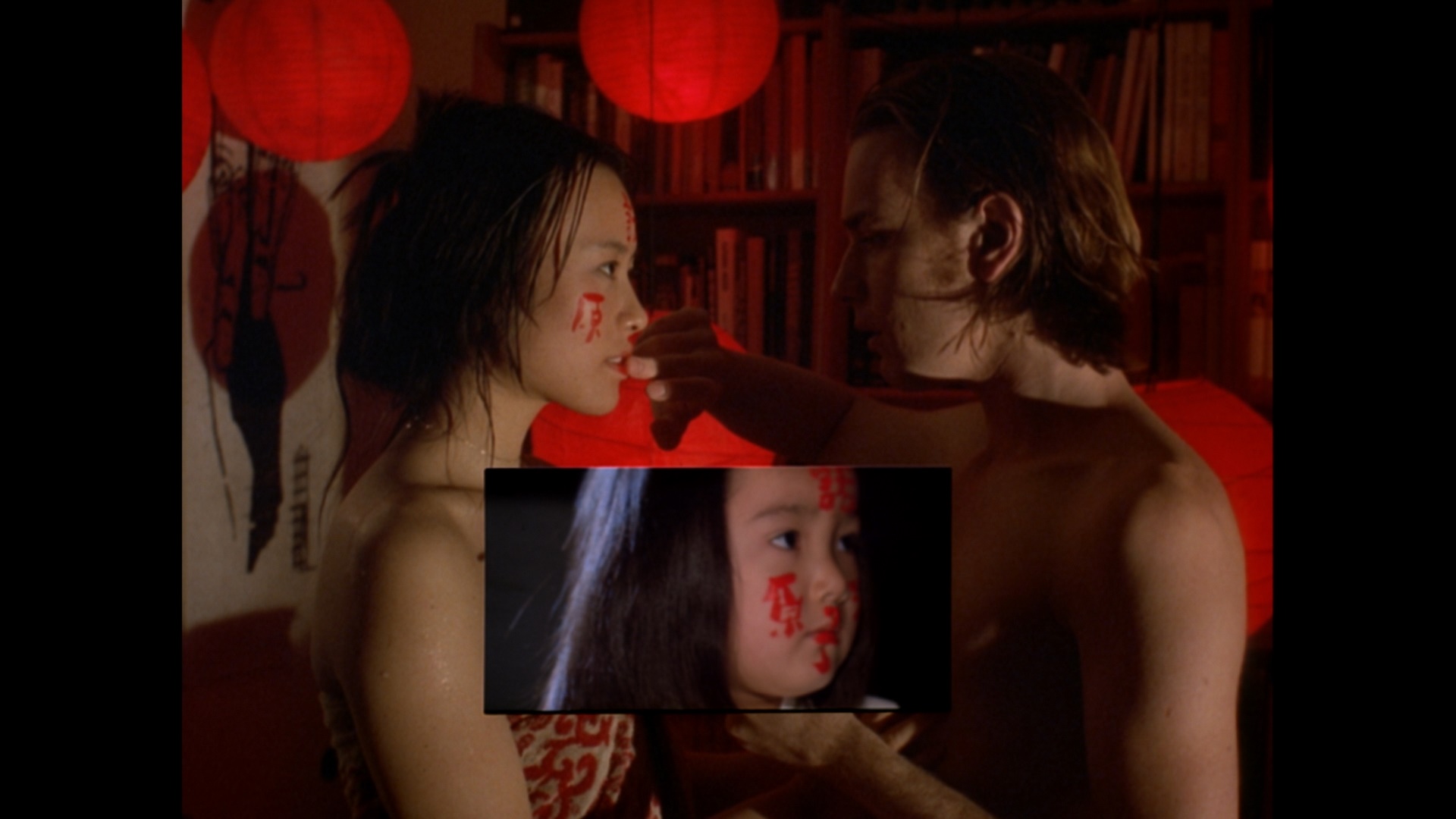 father's
father's 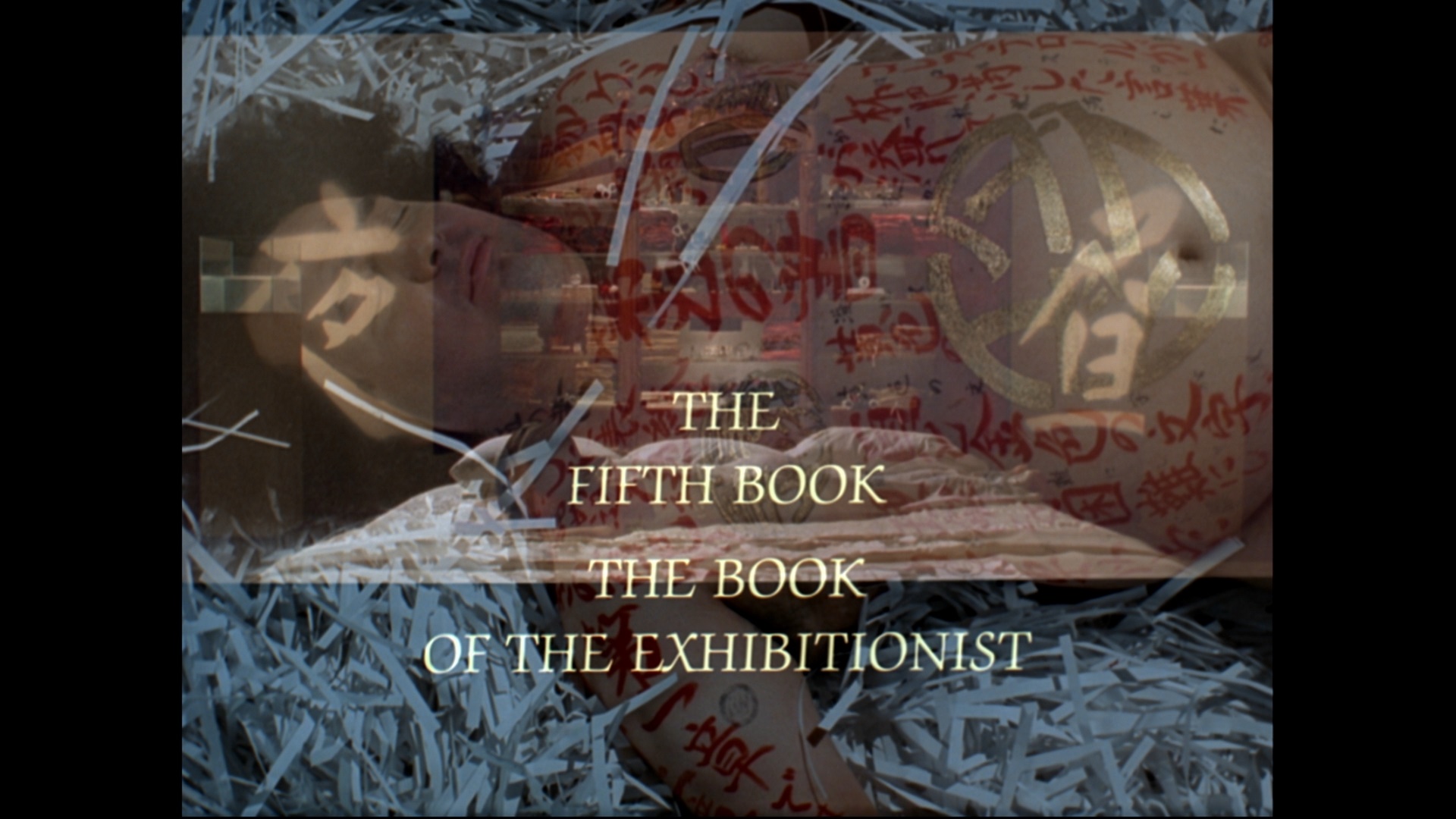 publisher, and several erotic and grisly complications ensue.
publisher, and several erotic and grisly complications ensue.
Deriving his inspiration from Sei Shonagon's literary "pillow book," Greenaway has fashioned an elusive series of vignettes combining text, flesh, and eroticism into an uneasy but ultimately transcendent whole. Like much of his television work, The Pillow Book was created with digital Japanese technology and involves layer upon layer of images interacting in various aspect ratios (ranging from anamorphic 2.35:1 to 1.33:1), which resulted in virtually none of its incarnations on the big or small screens being wholly satisfying for a long, long time. In theaters it was usually exhibited around 1.85:1, which lopped significant information off the top and bottom of many shots and even wiped out some of the lower subtitles in a few scenes. Things seemed to fare a bit better at first glance with its DVD editions, which were essentially open matte at 1.33:1; the American release from Sony explains on the back, "while filmed in multi-aspect ratios, has been re-formatted to fit your TV." This is a marked contrast to Greenaway's other digital Paintbox epic, Prospero's Books, which was shot hard-matted at 1.78:1 and completely collapsed under Fox's pan and scan video transfer. The Dolby Surround tracks for Pillow Book are also very effective and show off the eclectic soundtrack (ranging from Buddhist chants to techno) with plenty of 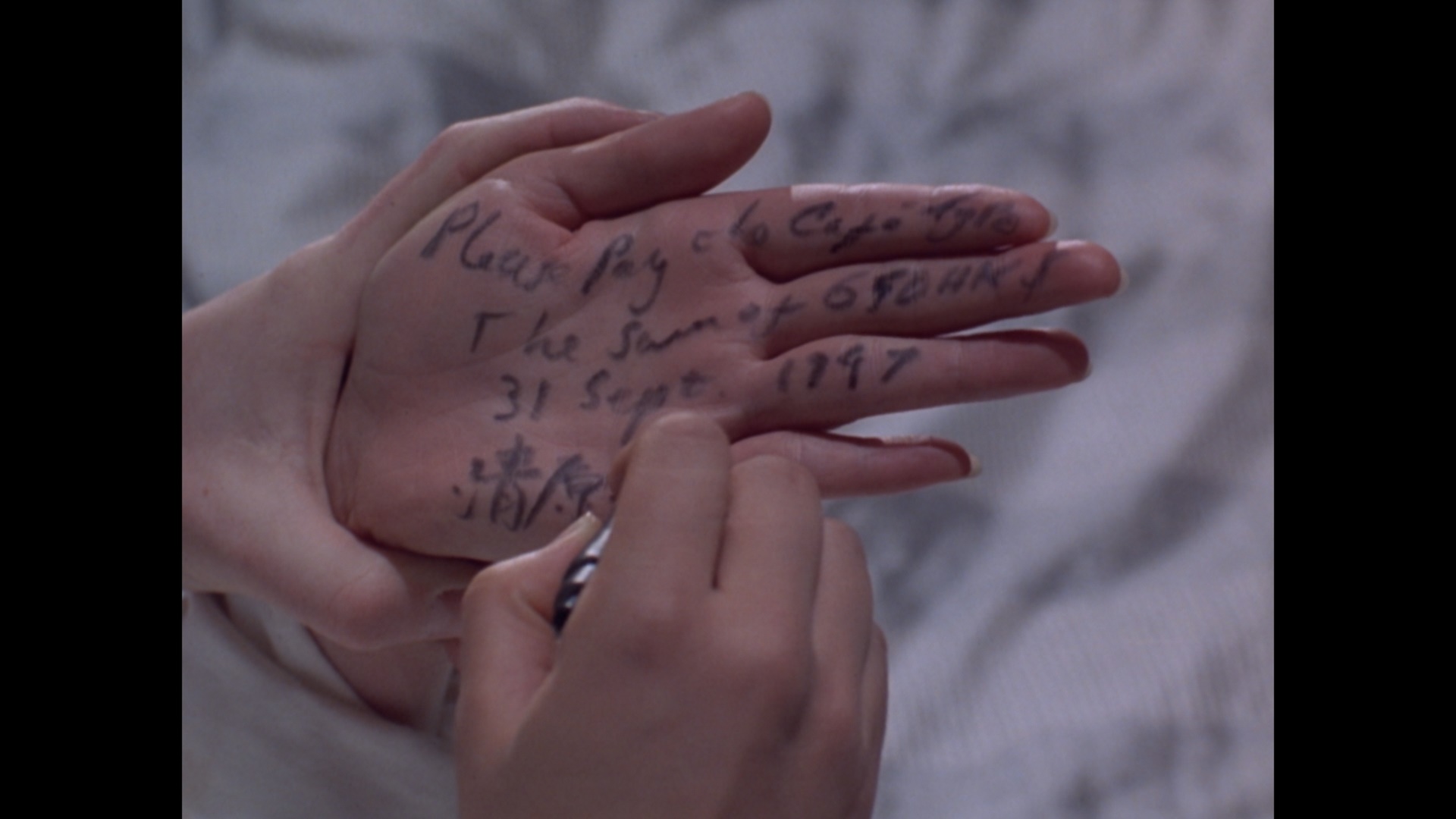 directional presence. The DVD also includes the fairly explicit U.S. theatrical trailer.
directional presence. The DVD also includes the fairly explicit U.S. theatrical trailer. 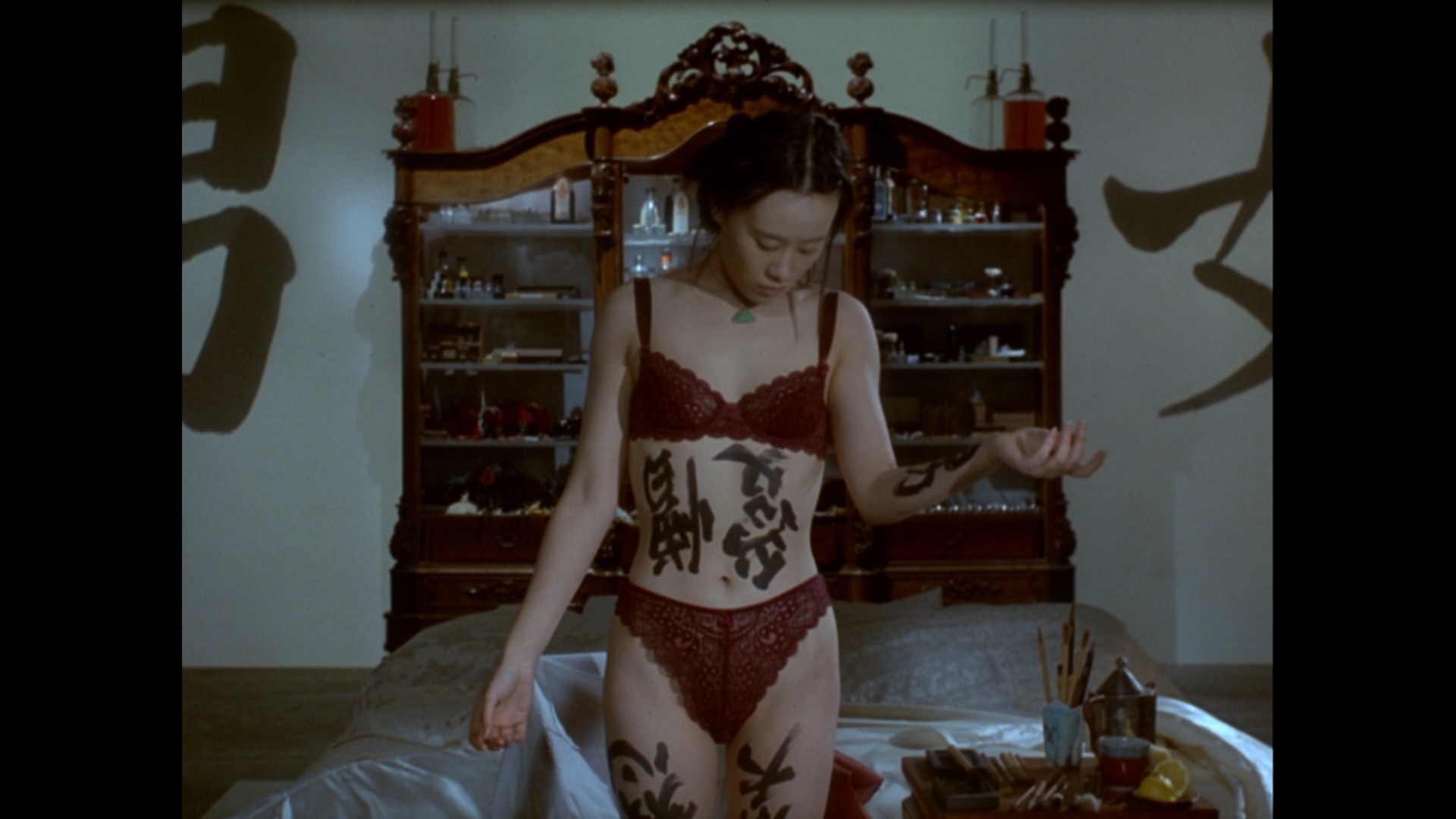
When Park Circus in the UK announced a Region B Blu-ray in 2011, anyone who had seen the film had to wonder exactly what the heck it was going to look like. The results probably wouldn't blow away newcomers expecting a slick, razor-sharp experience like your average Criterion title, but that's largely due to the conditions of the film's creation. Some shots look very crisp and vivid, in fact, while others (especially the multi-layered ones) can go soft on occasion. What's most surprising is the aspect ratio situation, which is handled here about as well as it could be without a wholesale reconfiguration of the entire feature from the original raw footage. The transfer features pillarboxing on the sides to maintain the 1.33:1 aspect ratio when intended, while the narrower shifts are smaller within the frame; interestingly, this reveals that the previous transfer actually tampered drastically with many of the 2.35:1 shots, which are far more prevalent than most viewers might have imagined and are shown here at their full width. The 2.0 lossless stereo track is solid as well, with good separation that makes the most of the wildly eclectic soundtrack. As with the DVD, the only substantial extra here is the (SD, non-anamorphic) trailer, though you do get a small image gallery, too. In  2015, the same transfer (identical pretty much down to the pixel) appeared in the U.S. from Film Movement on Blu-ray, which also featured the significant added perk of a partial Greenaway audio commentary (which runs for the first 38 minutes) charting his own artistic pursuits
2015, the same transfer (identical pretty much down to the pixel) appeared in the U.S. from Film Movement on Blu-ray, which also featured the significant added perk of a partial Greenaway audio commentary (which runs for the first 38 minutes) charting his own artistic pursuits 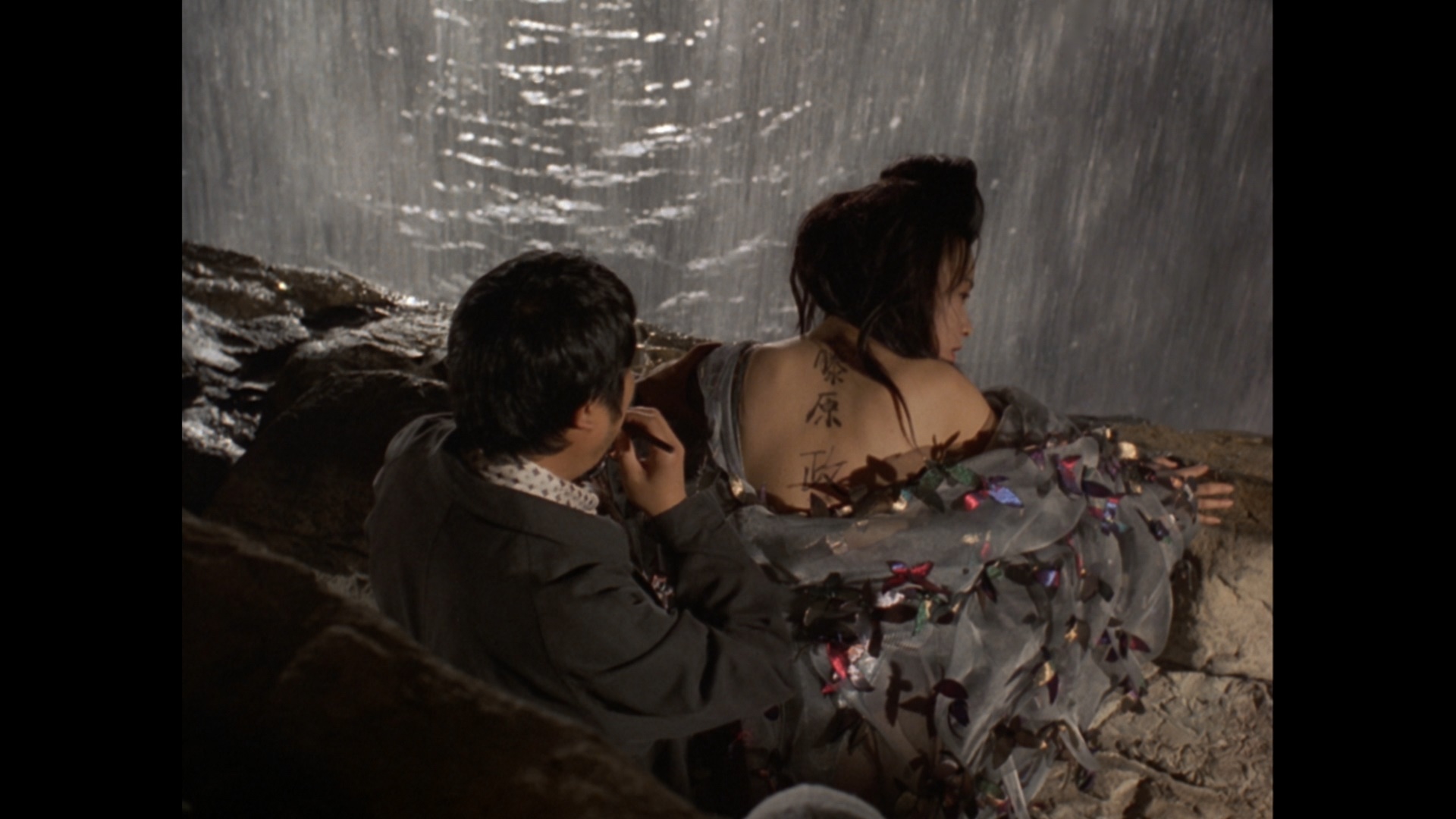 that influenced the film, the aspects of language and calligraphy that informed the story, and the cultural aspects of looking and writing.
that influenced the film, the aspects of language and calligraphy that informed the story, and the cultural aspects of looking and writing.
In 2020, Indicator managed to easily blow away both of the prior Blu-rays with its own expanded edition that makes a very significant step to restoring the film to its intended presentation. Theatrical prints featured subtitles written in calligraphic text for much of the multilingual dialogue (predominantly but not entirely Japanese), but that was tossed aside for standard, optional digital subtitles for the Blu-ray (since the HD master was created textless for multiple territories). That alteration significantly altered the tone and flow of the film, with its elegant relationship between spoken and written language muffled by the switch in subtitles. Thanks to what appears to be quite a bit of painstaking work, the calligraphic subtitles are back as they should be (and include several lines that were somehow omitted on the earlier discs in the process; see the comparison frame grabs below). Quality-wise the transfer looks comparable here, which is good news since it always looked great and far superior to the theatrical prints; however, it also gets a more sensitive authoring job here that plays a bit better in motion by 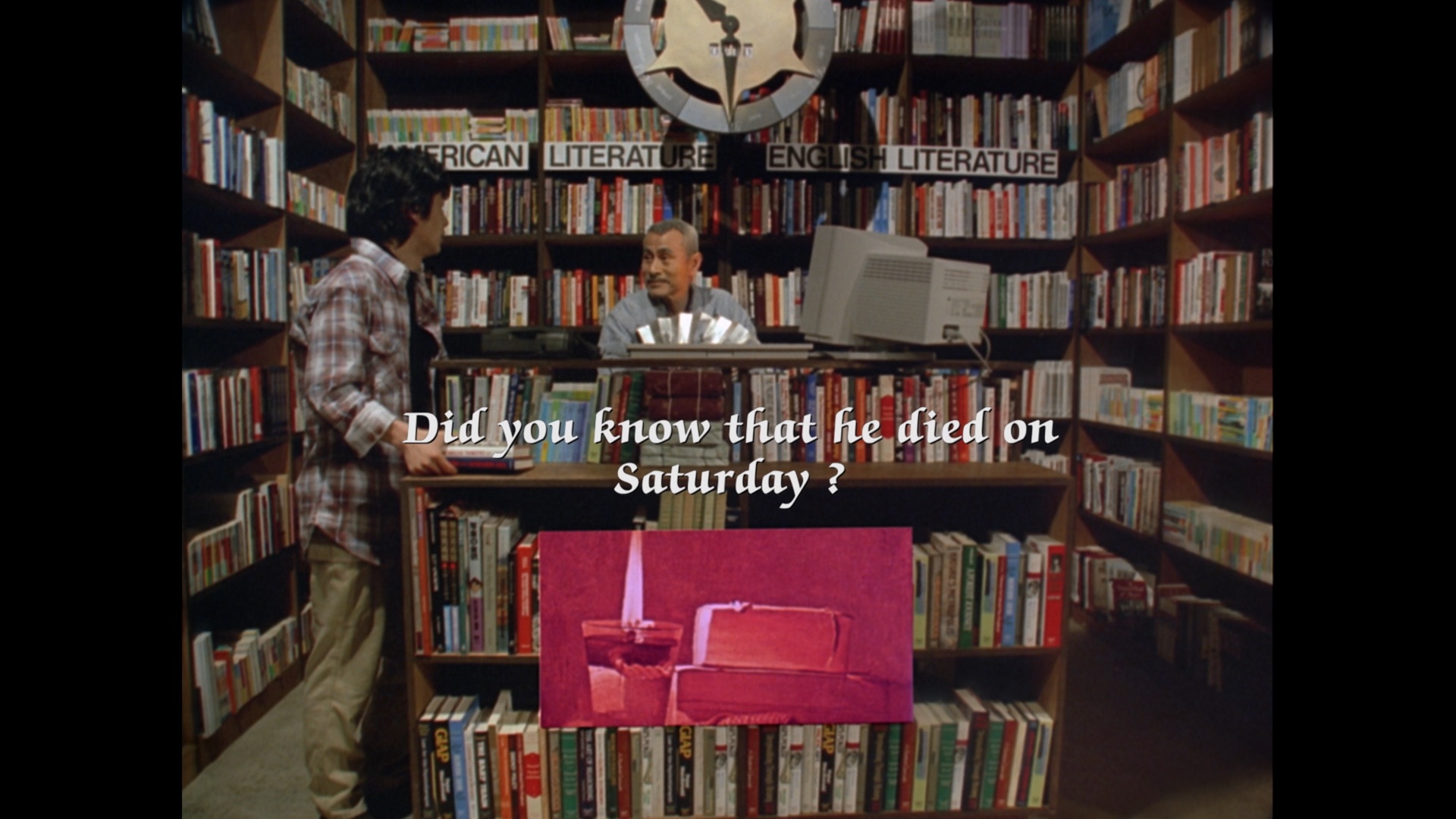 comparison. Blacks are also a notch deeper, which gives the image a bit more pop in the process. The 2.0 DTS-HD track is as effective as always, with some dramatic bursts of music really taking advantage of the
comparison. Blacks are also a notch deeper, which gives the image a bit more pop in the process. The 2.0 DTS-HD track is as effective as always, with some dramatic bursts of music really taking advantage of the  channel separation to full effect; the optional English SDH subtitles (for the English dialogue, obviously) are also improved.
channel separation to full effect; the optional English SDH subtitles (for the English dialogue, obviously) are also improved.
Greenaway's partial commentary is ported over here along with the trailer, but you also get
The Book of the Editor (2020, 26m23s): editor Chris Wyatt chats about his professional apprenticeship under Greenaway starting with The Belly of an Architectand continuing through numerous other productions including the 1992 short film "Rosa" (his first as main editor) and work as a sound editor on some of the key films as well. He also goes into the computer-based system of editing this feature, which was still novel at the time. He also mentions that there was originally a four-hour cut of this film, which would really be something to see if it still exists somewhere, and goes into the inconvenient theft of the Avid equipment during production. Speaking of "Rosa" (15m50s), that short film is a welcome addition here and makes for a significant chapter in Greenaway's history with his most famous cinematographer, the late Sacha Vierny. Shot in scope with a very strong Alain Resnais vibe, it's a sparkling little jewel capturing a dance performance by Anne Teresa De Keersmaker’s Rosas dance company and presented here in a brand new, immaculate restoration. A gallery of 71 images (production photos, stills, and international poster art is also included), and the limited 3,000-unit edition also comes with another of the label's lavish booklets featuring new liner notes by Adam Scouvell, Greenaway's notes on the film and extracts from both his "26 Facts about Flesh and Ink" primer and press book copy, sample critical reviews, and notes on "Rosa" by Anthony Nield and Bruno Mestdagh focusing on the film itself and the restoration process.
INDICATOR (Blu-ray)
FILM MOVEMENT (Blu-ray)
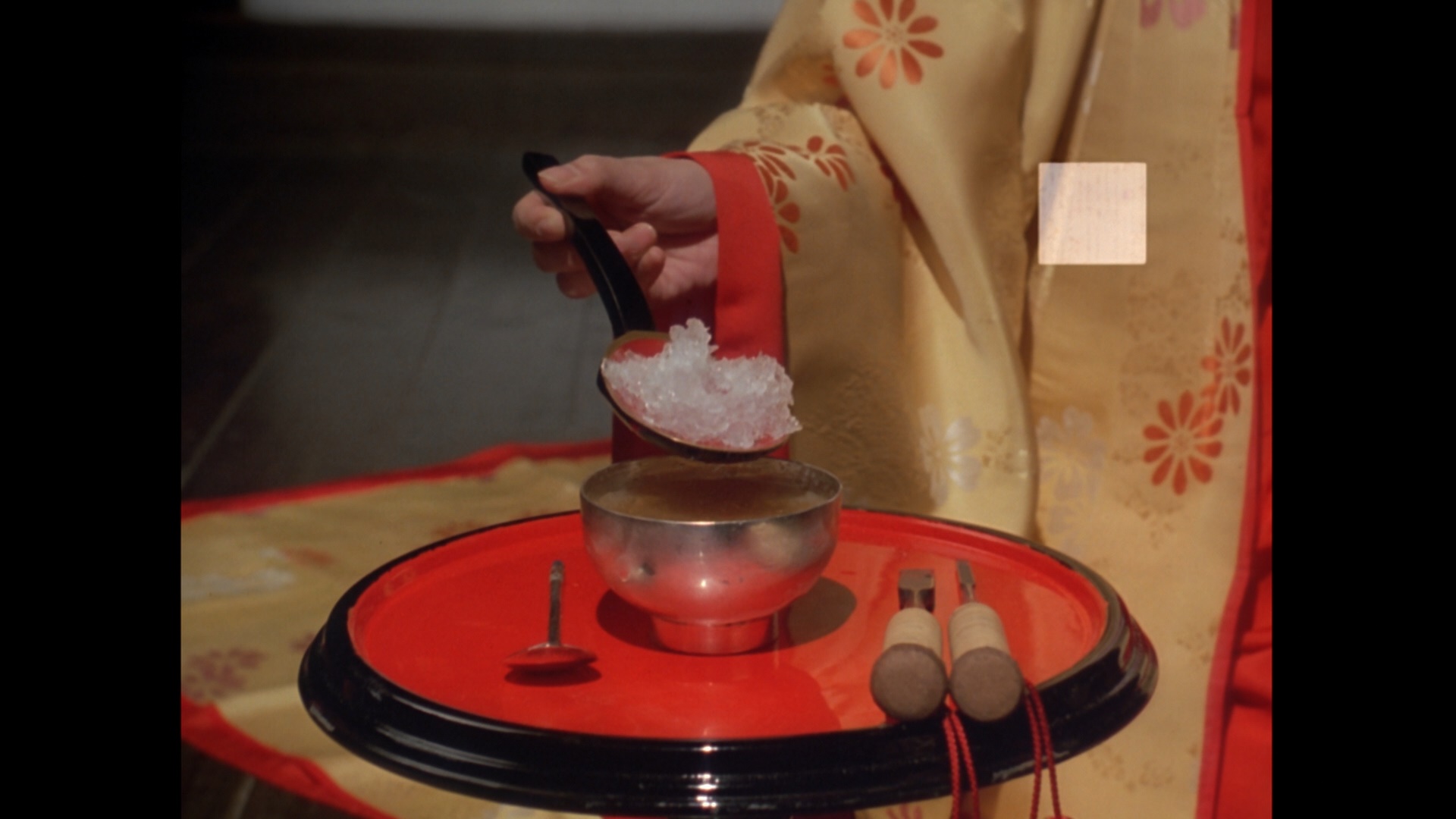
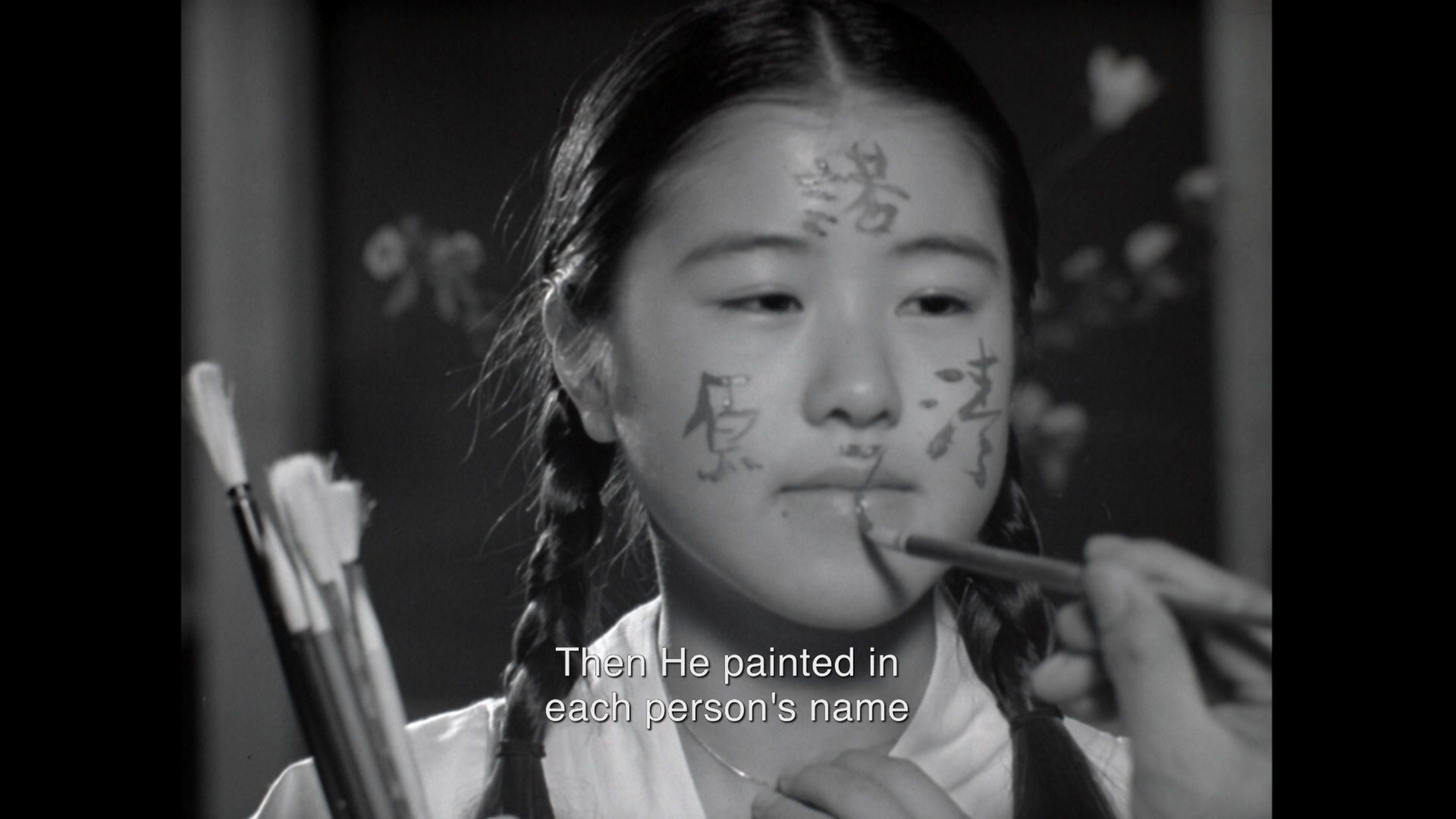
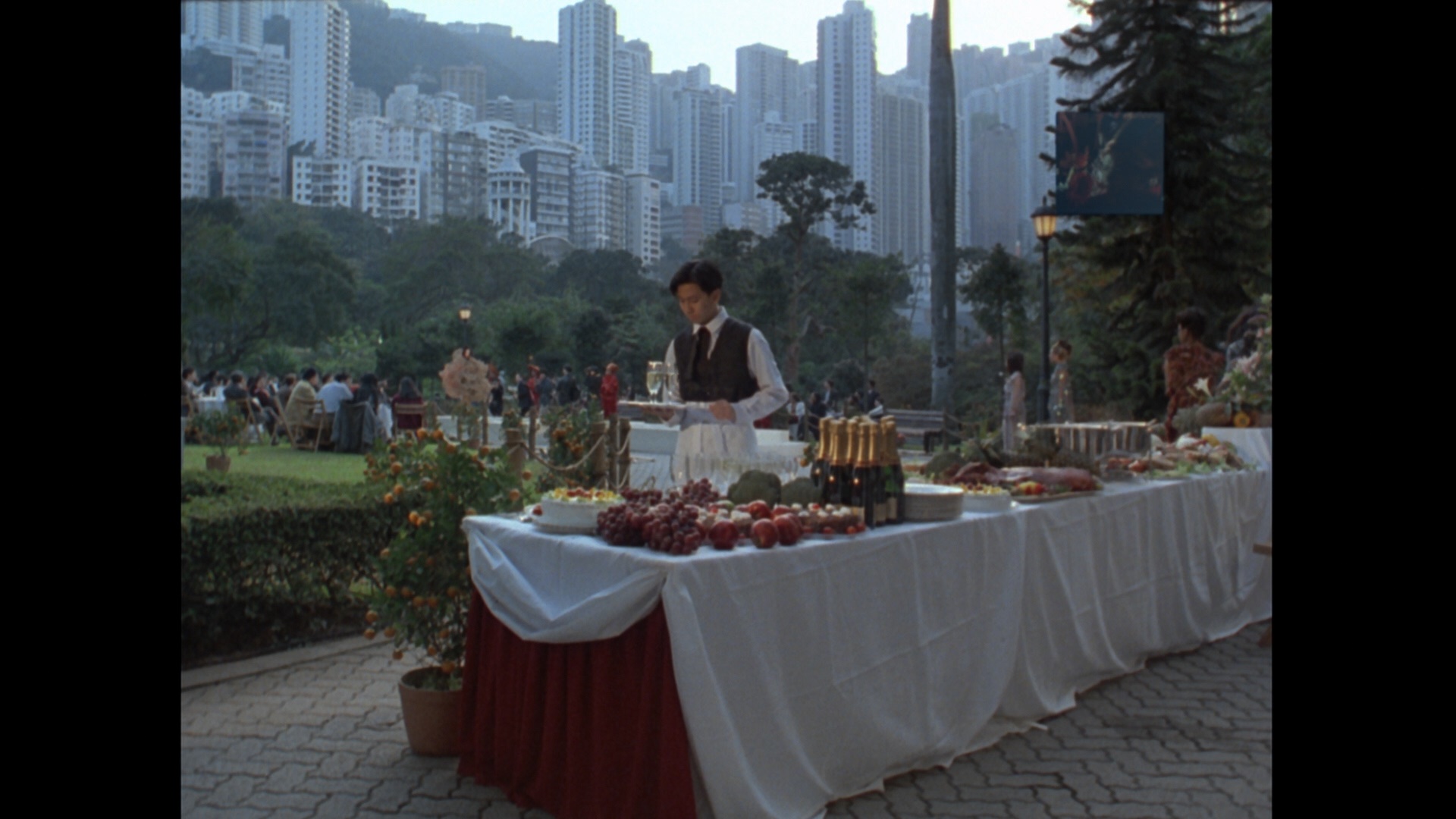

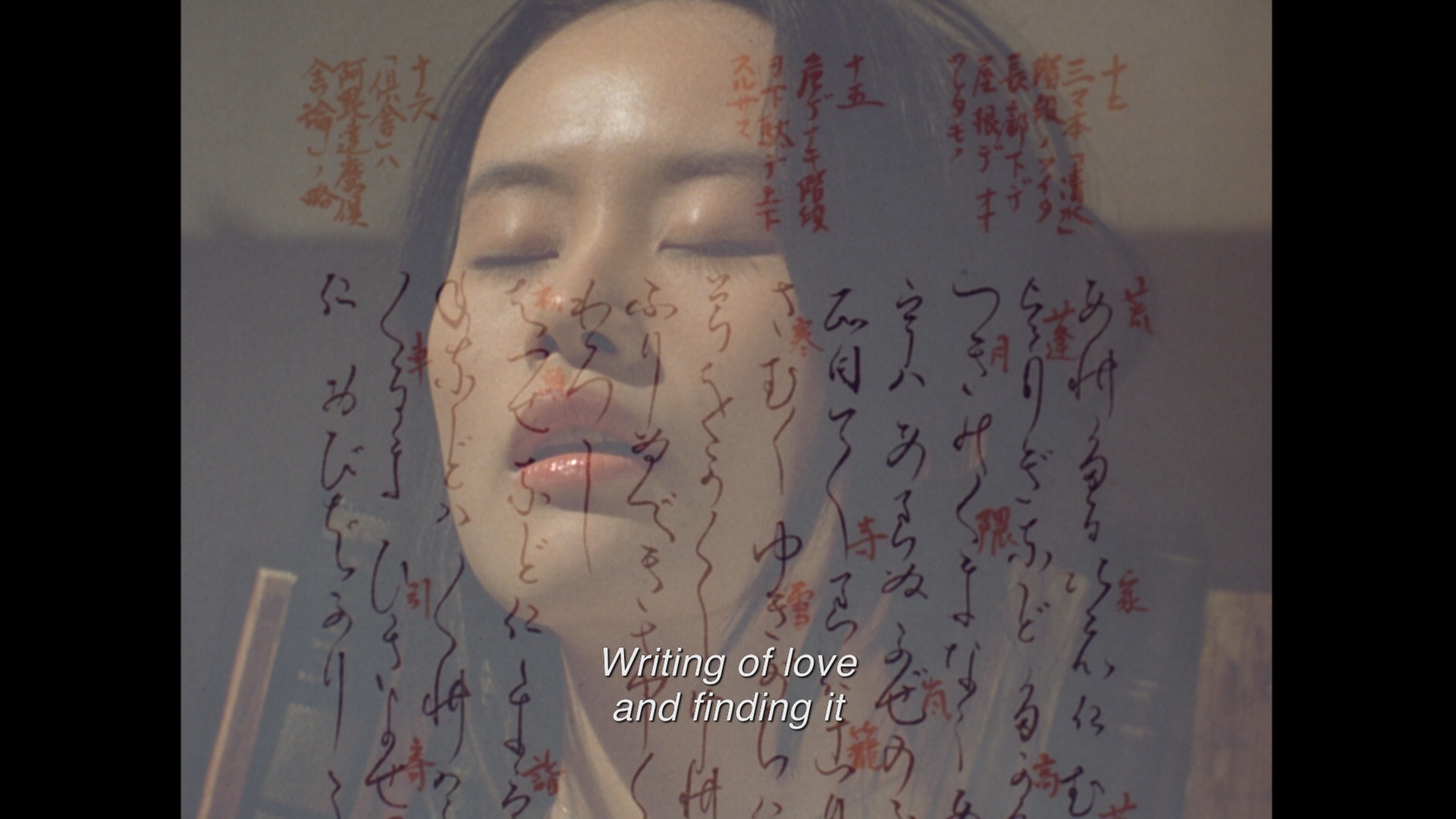
Updated review on January 28, 2020

 a brief tenure as an
a brief tenure as an  art house golden boy thanks to the sumptuous visuals feasts of The Cook, the Thief, Her Wife and Her Lover and Prospero's Books, British director Peter Greenaway began to stumble in the public and critical eye. After a falling out with composer Michael Nyman (an unfortunate end to one of the most fruitful modern cinematic relationships in European cinema), Greenaway was forced to adapt his all-song morality tale, The Baby of Macon, into a straight play within a play format that left many viewers completely baffled. Regrouping in the aftermath, Greenaway's follow up film, The Pillow Book, took almost three years to hit American shores after its completion, but that's still better than most of his subsequent work. This offering finds Greenaway still flinging viewers into a stunning mixture of visual technology, classical aesthetic style, plentiful artistic nudity, and jarring moments of graphic violence.
art house golden boy thanks to the sumptuous visuals feasts of The Cook, the Thief, Her Wife and Her Lover and Prospero's Books, British director Peter Greenaway began to stumble in the public and critical eye. After a falling out with composer Michael Nyman (an unfortunate end to one of the most fruitful modern cinematic relationships in European cinema), Greenaway was forced to adapt his all-song morality tale, The Baby of Macon, into a straight play within a play format that left many viewers completely baffled. Regrouping in the aftermath, Greenaway's follow up film, The Pillow Book, took almost three years to hit American shores after its completion, but that's still better than most of his subsequent work. This offering finds Greenaway still flinging viewers into a stunning mixture of visual technology, classical aesthetic style, plentiful artistic nudity, and jarring moments of graphic violence.  father's
father's  publisher, and several erotic and grisly complications ensue.
publisher, and several erotic and grisly complications ensue.  directional presence. The DVD also includes the fairly explicit U.S. theatrical trailer.
directional presence. The DVD also includes the fairly explicit U.S. theatrical trailer. 
 2015, the same transfer (identical pretty much down to the pixel) appeared in the U.S. from Film Movement on Blu-ray, which also featured the significant added perk of a partial Greenaway audio commentary (which runs for the first 38 minutes) charting his own artistic pursuits
2015, the same transfer (identical pretty much down to the pixel) appeared in the U.S. from Film Movement on Blu-ray, which also featured the significant added perk of a partial Greenaway audio commentary (which runs for the first 38 minutes) charting his own artistic pursuits  that influenced the film, the aspects of language and calligraphy that informed the story, and the cultural aspects of looking and writing.
that influenced the film, the aspects of language and calligraphy that informed the story, and the cultural aspects of looking and writing. comparison. Blacks are also a notch deeper, which gives the image a bit more pop in the process. The 2.0 DTS-HD track is as effective as always, with some dramatic bursts of music really taking advantage of the
comparison. Blacks are also a notch deeper, which gives the image a bit more pop in the process. The 2.0 DTS-HD track is as effective as always, with some dramatic bursts of music really taking advantage of the  channel separation to full effect; the optional English SDH subtitles (for the English dialogue, obviously) are also improved.
channel separation to full effect; the optional English SDH subtitles (for the English dialogue, obviously) are also improved. FILM MOVEMENT (Blu-ray)





Updated review on January 28, 2020

![]()
